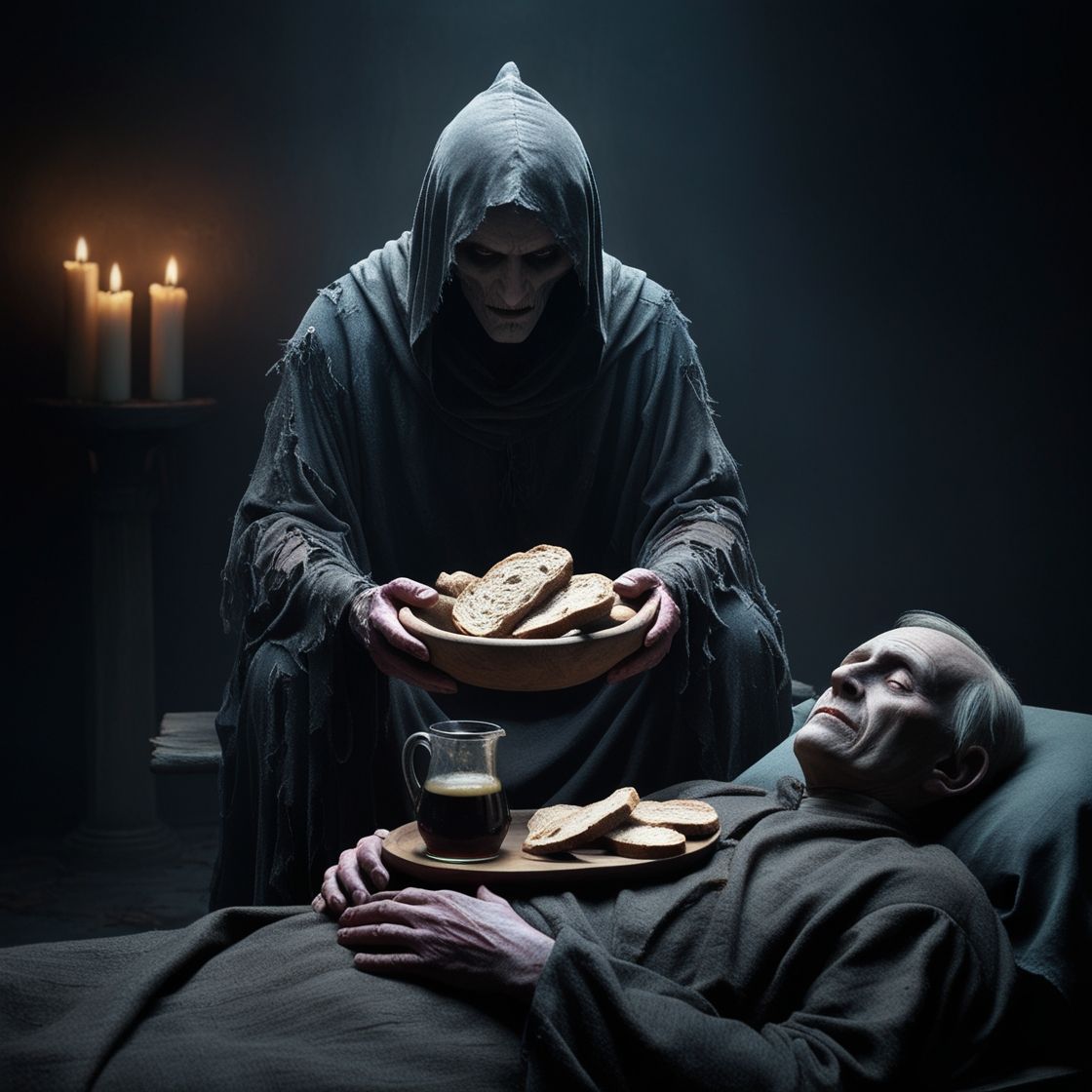
Have you ever felt the weight of guilt or regret so heavily that you wished you could hand it over to someone else? For centuries, communities in parts of Europe, particularly in Wales and Scotland, practiced a ritual that allowed them to do just that—not for the living, but for the dead. This ritual, known as sin-eating, is one of human history's most fascinating and mysterious traditions. In this post, we’ll explore the origins of sin-eating, its symbolic meaning, and why this ancient practice still captivates us today.
What Is Sin-Eating?
Sin-eating was a ritual performed to absolve the sins of a deceased person, ensuring their peaceful passage into the afterlife. The practice involved a designated individual, the sin-eater, who would consume food or drink that had been placed on or near the corpse. This act was believed to transfer the sins of the deceased to the sin-eater, freeing the soul from its burdens. The sin-eater was often a marginalized figure in the community—someone poor or socially ostracized—who performed this essential but stigmatized role. After the ritual, the sin-eater would leave, carrying the sins of the dead with them.
Historical Roots of Sin-Eating
The practice of sin-eating is most commonly associated with rural areas of Wales, Scotland, and the English Midlands, though similar customs have been documented in other cultures. The earliest written accounts of sin-eating date back to the 17th century, though the tradition likely has much older roots. One of the most detailed descriptions comes from John Aubrey, a 17th-century antiquarian, who wrote:
“In the County of Hereford was an old custom at funerals to hire poor people, who were to take upon them the sins of the party deceased. They were called Sin-Eaters.”
In these communities, sin-eating was a solemn and necessary ritual, often performed in secret due to its controversial nature. The Church condemned the practice as superstitious, but it persisted in areas where traditional beliefs held strong.
The Ritual of Sin-Eating
The sin-eating ritual was simple yet profound. Here’s how it typically unfolded:
- Preparation: After a death, the family would place a piece of bread or a bowl of salt on the chest of the deceased. Sometimes, ale or wine was also used.
- The Invocation: The sin-eater would be called to the home. They might recite a prayer or invocation, asking for the sins of the deceased to be transferred to them.
- The Consumption: The sin-eater would eat the bread or drink the ale, symbolically taking on the sins of the dead.
- The Departure: Once the ritual was complete, the sin-eater would leave, often in silence, carrying the moral burden of the deceased.
This act was believed to cleanse the soul of the dead, allowing them to enter the afterlife unburdened by their earthly misdeeds.
The Symbolism of Sin-Eating
At its core, sin-eating is a powerful symbol of transference and transformation. The ritual reflects the human desire to resolve guilt and seek absolution, not just for the dead but for the living as well. Here are some key symbolic elements:
- Food as a Vessel: The bread or drink served as a physical representation of the deceased’s sins. By consuming it, the sin-eater transformed the intangible (guilt) into something tangible and manageable.
- The Outsider’s Role: The sin-eater, often an outcast, played a crucial but thankless role. This mirrors the psychological concept of the scapegoat, a figure who takes on the burdens of others.
- Release and Renewal: The ritual provided closure for the deceased and their loved ones, symbolizing the possibility of renewal and peace.
Why Does Sin-Eating Fascinate Us Today?
While sin-eating is no longer practiced, it continues to capture our imagination. Here’s why:
- Universal Themes: Guilt, forgiveness, and the search for peace are timeless human experiences. Sin-eating speaks to our deepest fears and desires.
- Mystery and Morbidity: The idea of consuming someone’s sins is both eerie and intriguing, making sin-eating a popular subject in literature, film, and folklore.
- Psychological Resonance: The ritual reflects psychological processes like projection, transference, and the need for closure—concepts that remain relevant in modern therapy.
Reflecting on Sin-Eating: A Modern Perspective
While we may not literally consume the sins of others, the concept of sin-eating invites us to reflect on how we handle guilt and forgiveness in our own lives. Do we carry burdens that we need to release? Are there ways we can symbolically “let go” of past mistakes? Consider this: What would your own “sin-eating” ritual look like? Could it be as simple as writing down your regrets and burning the paper, or sharing your feelings with a trusted friend? The power of symbolism lies in its ability to help us process what feels too heavy to carry alone.
Call to Action
What are your thoughts on sin-eating? Have you ever encountered a similar practice in your own culture or family traditions? Share your reflections in the comments below—we’d love to hear your perspective! And stay tuned for the next post in this series, where we’ll explore the fascinating world of spirit crossing and the role of psychopomps in guiding souls to the afterlife.